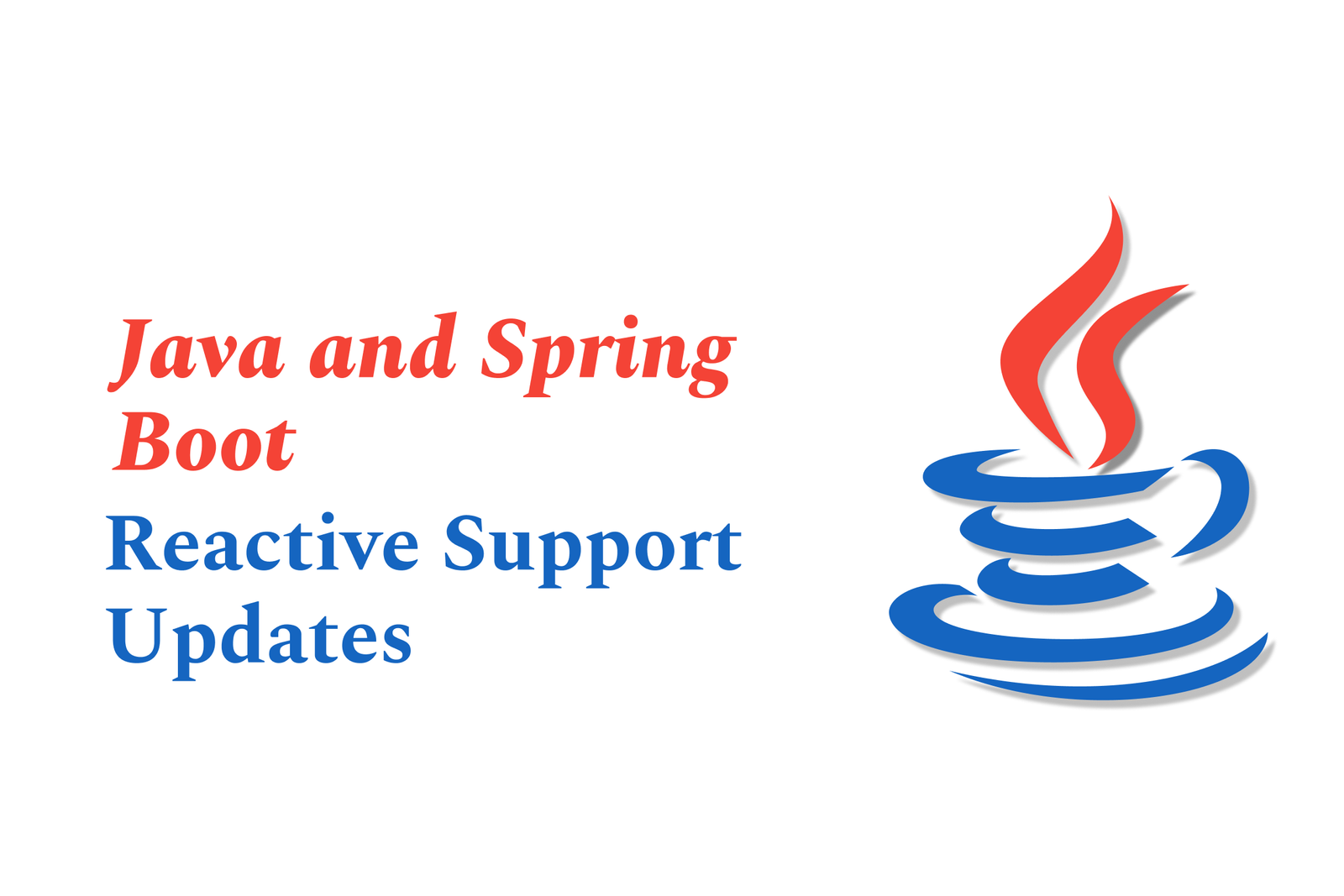Java and Spring Boot Reactive Support Updates
Java and Spring Boot have enhanced reactive support, enabling non-blocking, asynchronous programming for building scalable and efficient microservices. With Spring Boot 2 and Kotlin integration, developers can leverage reactive web, database access, and data streaming for improved resource utilization.
Java and Spring Boot Reactive Support Updates
1 ) Spring Boot 2 Reactive Enhancements with Kotlin
Spring Boot 2.0 introduced reactive web libraries that enable building reactive microservices with non blocking, asynchronous interactions.
Kotlin language support complements reactive programming, allowing developers to write concise, readable reactive applications, exemplified by a simple reactive counter microservice.
Reactive features improve resource efficiency when dealing with I/O bound operations like Redis interaction or streaming events by avoiding blocking calls.
2 ) Reactive Microservice Design Example
The tutorial outlines building a basic reactive microservice: an infinitely incrementing/decrementing counter.
Functional requirements include checking, incrementing, decrementing, and streaming updates to the counter.
The design leverages REST for communication, reactive and non blocking behaviors for better scalability using Spring Boot 2 and Kotlin.
3 ) Setup and Framework Integration
Spring Initializr is recommended for generating a Spring Boot 2.0 project template with Reactive Web and Reactive Redis dependencies pre configured.
Integration with Redis provides an example of reactive data access inside Spring Boot applications.
Kotlin coroutine support in Spring’s reactive ecosystem simplifies asynchronous programming.
4 ) Reactive MongoDB Support in Spring Data
Spring Data offers both imperative and reactive APIs for MongoDB with nearly identical method signatures differing only in return types such as Mono and Flux in reactive variants.
ReactiveMongoTemplate supports saving, updating, deleting, and querying MongoDB documents reactively, enhancing reactive data pipelines and enabling backpressure handling.
5 ) Benefits and Practical Considerations
Reactive programming in Java with Spring Boot 2 helps efficiently utilize system resources especially in I/O heavy microservices by eliminating thread blocking.
It is advised to evaluate if reactive programming fits your application since it can introduce complexity and requires reactive capable infrastructure (e.g., reactive database drivers).
Spring Boot’s opinionated defaults and auto configuration ease the adoption of reactive patterns for Java developers.
Summary:
Java’s evolving ecosystem, notably with Spring Boot 2 and Kotlin, has strengthened its reactive programming capabilities. This includes reactive web frameworks, reactive database support (like MongoDB, Redis), and Kotlin coroutine integration, providing a powerful toolset for building modern non blocking asynchronous applications. Spring Boot simplifies bootstrapping such projects, while Spring Data enhances reactive data handling, all contributing to more scalable and resource efficient Java microservices.
https://justacademy.in/news-detail/react-native?s-secret-sauce-for-lightning-fast-startups
https://justacademy.in/news-detail/flutter-web-performance-benchmarks
https://justacademy.in/news-detail/flutter-roadmap-beyond-2025
https://justacademy.in/news-detail/react-native?s-push-notification-personalization-tricks
https://justacademy.in/news-detail/why-react-native-remains-the-favorite-for-cross-platform-ui
Related Posts
In 2025, top Angular libraries offer modern, feature-rich components and tools for building dynamic web apps. From powerful data grids to low-code platforms like UI Bakery, these libraries enhance development speed, UI design, and scalability, making them essential for Angular developers.
Migrating from AngularJS to Angular 17 involves gradually upgrading your app by running both frameworks together using tools like ngUpgrade, rewriting components in TypeScript, and adopting Angular’s modern architecture to enhance performance, maintainability, and long-term support.
Angular state management tools help organize and handle app data efficiently, improving scalability and maintainability. Popular options include NgRx for robust, RxJS-based patterns, and newer Signal Store solutions that offer simpler, reactive approaches integrated tightly with Angular’s latest features.
RxJS in Angular empowers developers to manage asynchronous data streams with powerful operators like `forkJoin`, `combineLatest`, and `zip`. Mastering these key operators in 2025 is essential for building efficient, reactive applications that handle complex event sequences seamlessly.
Angular performance optimization in 2025 focuses on improving app speed and responsiveness by using techniques like OnPush change detection, lazy loading, efficient data caching, and AOT compilation. These practices reduce load times, enhance user experience, and ensure scalable, fast Angular applications.
In 2025, Angular remains preferred for large-scale, enterprise apps with its robust, all-in-one framework, while Vue attracts developers seeking simplicity and fast development for smaller projects. Both frameworks excel, with choice driven by project needs and team expertise.
Angular Signals are a new reactive primitive in Angular 16 that enable fine-grained, efficient change detection by automatically tracking dependencies and updating only affected parts of the UI. They simplify state management and boost app performance, revolutionizing Angular's reactivity model.
Angular interview questions to prepare in 2025 focus on core concepts like components, directives, data binding, routing, and dependency injection, along with TypeScript mastery and latest Angular features to ensure strong practical knowledge for building scalable, efficient web applications.
AngularJS reached its official end of support in January 2022, meaning no further updates or security patches. To ensure app security and performance, developers should consider migrating to modern Angular versions or seek third-party long-term support options if immediate migration isn’t possible.
The Angular Roadmap 2025 highlights upcoming features focused on improving developer experience and performance, including zoneless Angular, Signals integration, enhanced Forms, async data handling, improved HMR, and expanded Angular Material/CDK enhancements, driving modern, efficient web app development.










